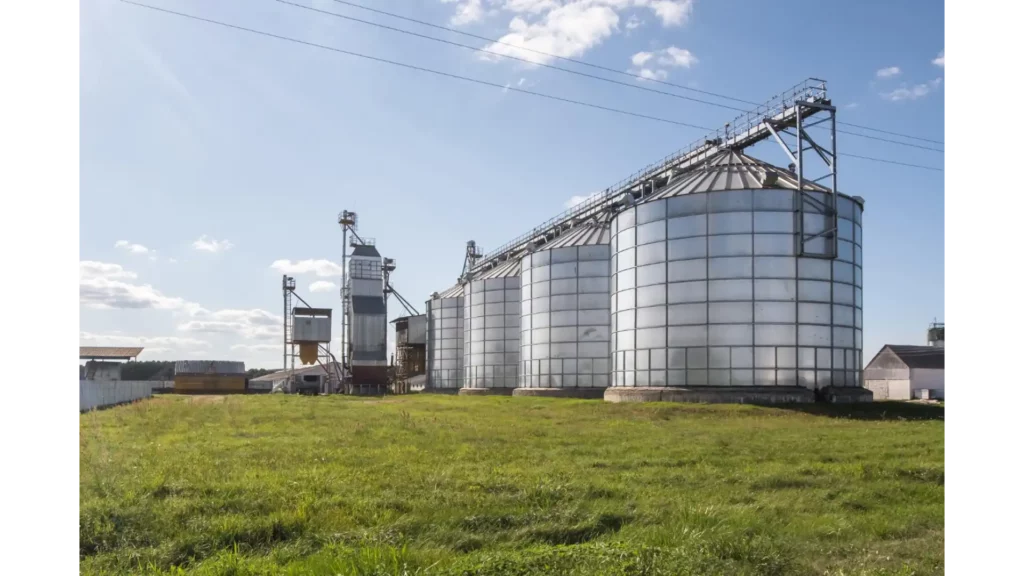In a world that's increasingly focused on sustainable energy solutions, the Austin Energy Biomass Plant stands as a shining example of how innovation and eco-consciousness can meet the energy needs of a growing city while minimizing environmental impact.
This comprehensive blog post will delve deep into the Austin Energy Biomass Plant, exploring its history, functionality, environmental benefits, and the role it plays in Austin's broader sustainability initiatives.
What is Biomass Energy?
Before we dive into the specifics of the Austin Energy Biomass Plant, let's start with the fundamentals of biomass energy.
Biomass energy is derived from organic materials, such as wood, agricultural residues, and even algae. These materials can be burned directly to produce heat and electricity or converted into biofuels like ethanol and biodiesel.
History of the Austin Energy Biomass Plant
Early Origins
Austin Energy Biomass Plant started in the early 2000s when Austin realized the need for cleaner energy.
Dependent on fossil fuels, the city faced environmental damage and unstable prices. To find a solution, Austin Energy began a project to investigate biomass and other alternative energy sources.
Plant Construction and Commissioning
The Austin Energy Biomass Plant was built from 2008 to 2011. It converts wood waste into electricity using biomass combustion, a low-carbon method that relies on locally sourced, renewable resources.

How the Austin Energy Biomass Plant Works
Biomass Combustion Process
The heart of the Austin Energy Biomass Plant lies in its combustion system. The plant collects various types of biomass, including wood chips, sawdust, and tree trimmings, from local sources.
These materials are then subjected to a controlled burning process, releasing thermal energy in the form of steam. The steam is used to spin turbines connected to generators, ultimately producing electricity.
Environmental Benefits
- Reduced Greenhouse Gas Emissions: The plant helps in lowering CO2 levels by utilizing biomass, which releases carbon absorbed during plant growth, resulting in a minimal net increase in CO2.
- Diverting Waste from Landfills: By using wood waste and other organic materials, the plant reduces landfill pressure and prevents methane emissions, a potent greenhouse gas.
- Sustainable Resource Utilization: The plant promotes sustainable forestry and reduces the need for long-distance fuel transportation by using locally-sourced biomass.
- Preservation of Natural Habitats: The use of waste materials for energy production minimizes the need for new resource extraction, thereby protecting natural habitats and biodiversity.
- Promotion of Local Biodiversity: Encouraging sustainable forestry practices leads to improved forest management and enhanced regional biodiversity.
- Soil Improvement and Carbon Sequestration: Biomass combustion produces ash that can be used as fertilizer, and the growth of new biomass helps in absorbing atmospheric CO2.
- Reduced Air Pollution: Biomass energy production significantly lowers air pollutants like sulfur dioxide and nitrous oxides, leading to improved air quality.

Austin's Commitment to Sustainability
Renewable Energy Initiatives
Austin, a city committed to the environment, has set ambitious renewable energy goals. By 2027, they aim to get 65% of their electricity from renewable sources, and by 2050, they want to achieve complete carbon neutrality.
The Austin Energy Biomass Plant plays a crucial role in helping the city reach these milestones.
Role of Biomass in Austin's Energy Portfolio
The Austin Energy Biomass Plant contributes 2% to the city's electricity production, reducing Austin's reliance on non-renewable energy sources, including fossil fuels.
This plant diversifies the energy portfolio, providing stability against fluctuating fossil fuel prices and improving the city's energy security.
Economic and Employment Advancements
The Austin Energy Biomass Plant benefits the city's economy by creating jobs and promoting regional economic development.
It reflects Austin's dedication to both the environment and a strong economy.

Addressing Key Challenges and Charting a Sustainable Future for the Plant
- Sustainable Sourcing of Biomass Feedstock: Ensuring a steady and environmentally responsible supply of biomass is crucial. This involves developing a sustainable harvesting strategy to avoid depleting forests and other ecosystems.
- Adapting to Technological Advancements: The plant must stay current with emerging, more efficient, and eco-friendly renewable energy technologies.
- Operational Efficiency and Environmental Impact: Focus on improving the efficiency of energy production processes, reducing emissions, and minimizing waste to enhance environmental performance.
- Community Engagement and Stakeholder Involvement: Building and maintaining strong relationships with the community and stakeholders is vital for addressing concerns, gaining public support, and ensuring that the plant's operations align with broader sustainability goals.
- Strategic Planning for Long-term Viability: The plant needs a long-term strategy that accounts for potential changes in the energy market, regulatory environment, and societal expectations related to renewable energy and environmental conservation.

Austin's Biomass Energy Initiative: Pioneering Sustainable Power
Austin leads in integrating renewable energy sources like biomass into its urban infrastructure, showcasing its commitment to environmental stewardship.
- Local Sourcing and Sustainability
Austin's green energy plan uses biomass from local sources, such as wood waste and organic materials, to power the city.
This reduces environmental impact and supports the local economy by creating jobs in the forestry and biomass processing industries.
- Biomass: A Renewable and Plentiful Energy Source
Austin's rich ecological landscape, characterized by dense forests and diverse ecosystems, positions biomass as a renewable and sustainable energy source.
In contrast to the limited nature of fossil fuels, biomass in Austin can be continuously replenished through effective forest management and reforestation, ensuring a balance between resource utilization and environmental conservation.
- Environmental Benefits of Biomass Energy
Biomass energy production is more environmentally friendly compared to traditional fossil fuels due to its involvement in the natural carbon cycle.
Organic materials used in biomass plants absorb carbon dioxide (CO2) while growing, which offsets the CO2 emitted when they are burned for energy.
This creates a balanced, sustainable energy cycle, making biomass energy align with Austin's commitment to environmental preservation and sustainability.

Enhanced Environmental Monitoring and Compliance at Austin Energy Biomass Plant
- Advanced Continuous Emissions Monitoring Systems: Utilization of state-of-the-art technology to continuously monitor emissions, focusing on pollutants such as sulfur dioxide (SO2), nitrogen oxides (NOx), and particulate matter. This ensures compliance with environmental limits through real-time data analysis.
- Rigorous Compliance with Environmental Regulations: Strict adherence to environmental laws like the Clean Air Act and the Clean Water Act, emphasizing the plant's commitment to environmental protection and public health.
- Proactive Air Quality Management: Regular monitoring of air quality, particularly for particulate matter and other pollutants, to assess and maintain local air quality standards. Implementation of corrective actions if deviations are detected.
- Water Conservation and Sustainable Management Practices: Adoption of sustainable water management strategies to minimize consumption and ensure that water discharges meet environmental quality standards. This includes the treatment and recycling of water.
- Regular Environmental Impact Assessments (EIAs): Conducting periodic EIAs to evaluate the long-term environmental impact of the plant, focusing on air and water quality, wildlife habitats, and overall ecosystem health. These assessments help in identifying risks and developing mitigation strategies.
- Biodiversity Conservation Initiatives: Engagement in biodiversity preservation through partnerships with conservation organizations and habitat restoration projects, aiming to minimize ecological footprints and positively contribute to the ecosystem.
- Commitment to Public Accountability and Transparency: Ensuring transparency and public accountability by regularly publishing reports on emissions data, compliance records, and environmental initiatives.

Expanded Future Expansion Plans for Austin Energy Biomass Plant
The success of the Austin Energy Biomass Plant has not gone unnoticed. In line with Austin's commitment to sustainable energy, there are ambitious future expansion plans on the horizon.
Austin Energy envisions increasing the capacity of the biomass plant, with potential upgrades that could significantly boost its electricity generation capabilities.
Advanced biomass conversion technology improves combustion efficiency and energy output, ensuring a sustainable fuel supply for Austin's renewable energy portfolio. This showcases their dedication to sustainability and a greener future.
Frequently Asked Questions (FAQs)
1. What is biomass, and how does it differ from fossil fuels?
Biomass refers to organic materials such as wood, crop residues, and agricultural waste that can be used as a source of energy. It differs from fossil fuels because it is derived from recently living organisms and releases carbon dioxide (CO2) that was recently absorbed from the atmosphere during its growth. Fossil fuels, on the other hand, release CO2 that has been stored underground for millions of years.
2. How much electricity does the Austin Energy Biomass Plant generate?
The Austin Energy Biomass Plant currently contributes approximately 2% of the total electricity generation in the city of Austin. While this may seem relatively small, it plays a crucial role in diversifying the energy mix and reducing the city's reliance on fossil fuels.
3. Is biomass combustion environmentally friendly?
Yes, biomass combustion is considered environmentally friendly because it has a lower carbon footprint compared to fossil fuels. When biomass is burned, it releases CO2 into the atmosphere, but this CO2 was recently absorbed from the atmosphere during the growth of the biomass. As a result, the net increase in CO2 levels is minimal, making it a cleaner energy source.
4. What are the challenges facing the Austin Energy Biomass Plant?
The plant faces challenges related to the sustainable procurement of biomass feedstock. Ensuring a consistent and sustainable supply of biomass materials is crucial to prevent over-exploitation of forests and ecosystems. Additionally, the plant must stay technologically competitive as advancements in renewable energy continue to emerge.
5. How does the Austin Energy Biomass Plant contribute to Austin's sustainability goals?
The plant plays a significant role in helping Austin achieve its renewable energy goals, aiming to derive 65% of its electricity from renewable sources by 2027 and become carbon neutral by 2050. By diversifying the energy mix and reducing greenhouse gas emissions, the plant supports Austin's commitment to a greener and more sustainable future.
6. Are there any economic benefits associated with the Austin Energy Biomass Plant?
Yes, the plant provides economic benefits to the region. It creates jobs in various sectors, including forestry, transportation, and plant operations, contributing to the local economy. Additionally, it reduces the need for long-distance transportation of fuels, further supporting local businesses.
7. How can I learn more about the Austin Energy Biomass Plant and its operations?
For more information about the Austin Energy Biomass Plant, you can visit the official Austin Energy website, which provides detailed insights into the plant's functionality, sustainability initiatives, and environmental impact. You can also contact Austin Energy directly for specific inquiries or to arrange visits or tours, if available.
8. What are some other examples of renewable energy sources used in Austin?
Austin is committed to diversifying its renewable energy sources. In addition to the Austin Energy Biomass Plant, the city utilizes wind and solar energy. Wind farms and solar installations contribute significantly to Austin's renewable energy portfolio, further reducing its reliance on fossil fuels.
9. How can individuals in Austin support sustainability efforts like the Austin Energy Biomass Plant?
Residents and businesses in Austin can support sustainability efforts by reducing their energy consumption, participating in renewable energy programs, and advocating for policies that promote clean energy and environmental conservation. Additionally, individuals can explore energy-efficient practices and technologies to reduce their carbon footprint.
10. What role does the Austin Energy Biomass Plant play in mitigating climate change?
The Austin Energy Biomass Plant plays a vital role in mitigating climate change by reducing greenhouse gas emissions. It prevents the release of methane from landfills by diverting wood waste and organic materials, and it generates electricity with a lower carbon footprint compared to fossil fuels. This helps Austin move closer to its carbon neutrality goal and contributes to global efforts to combat climate change.
Austin Energy Biomass Plant Conclusion
The Austin Energy Biomass Plant stands as a symbol of Austin's commitment to a greener and more sustainable future.
Utilizing locally-sourced biomass to generate electricity, reduces greenhouse gas emissions, diverts waste from landfills, and supports the city's renewable energy goals.
While it faces challenges and uncertainties, the plant serves as a vital stepping stone in Austin's journey towards a more sustainable and resilient energy future.

